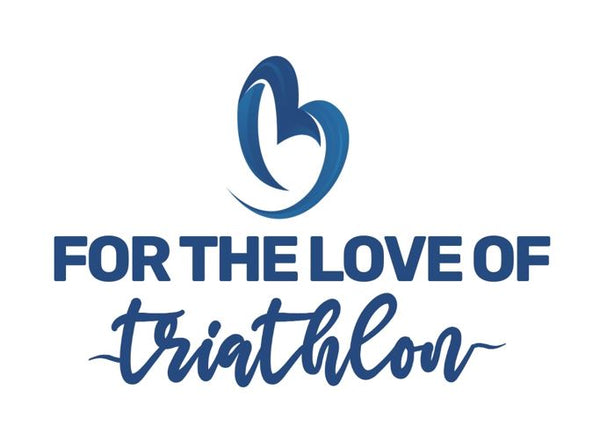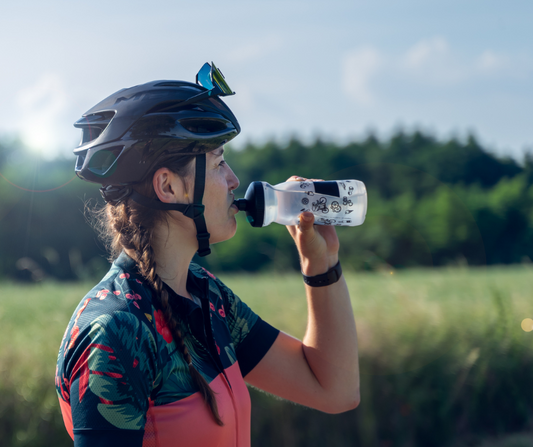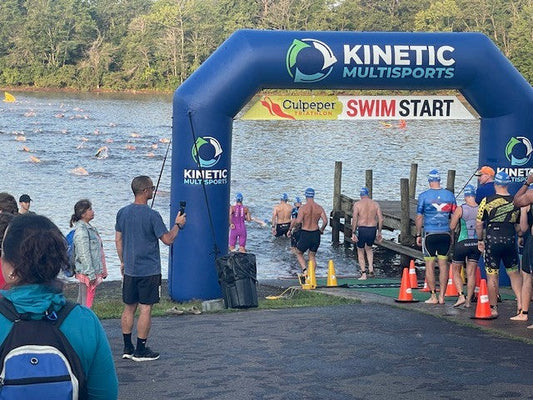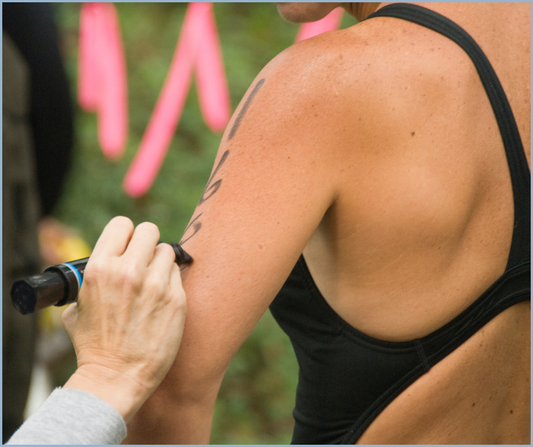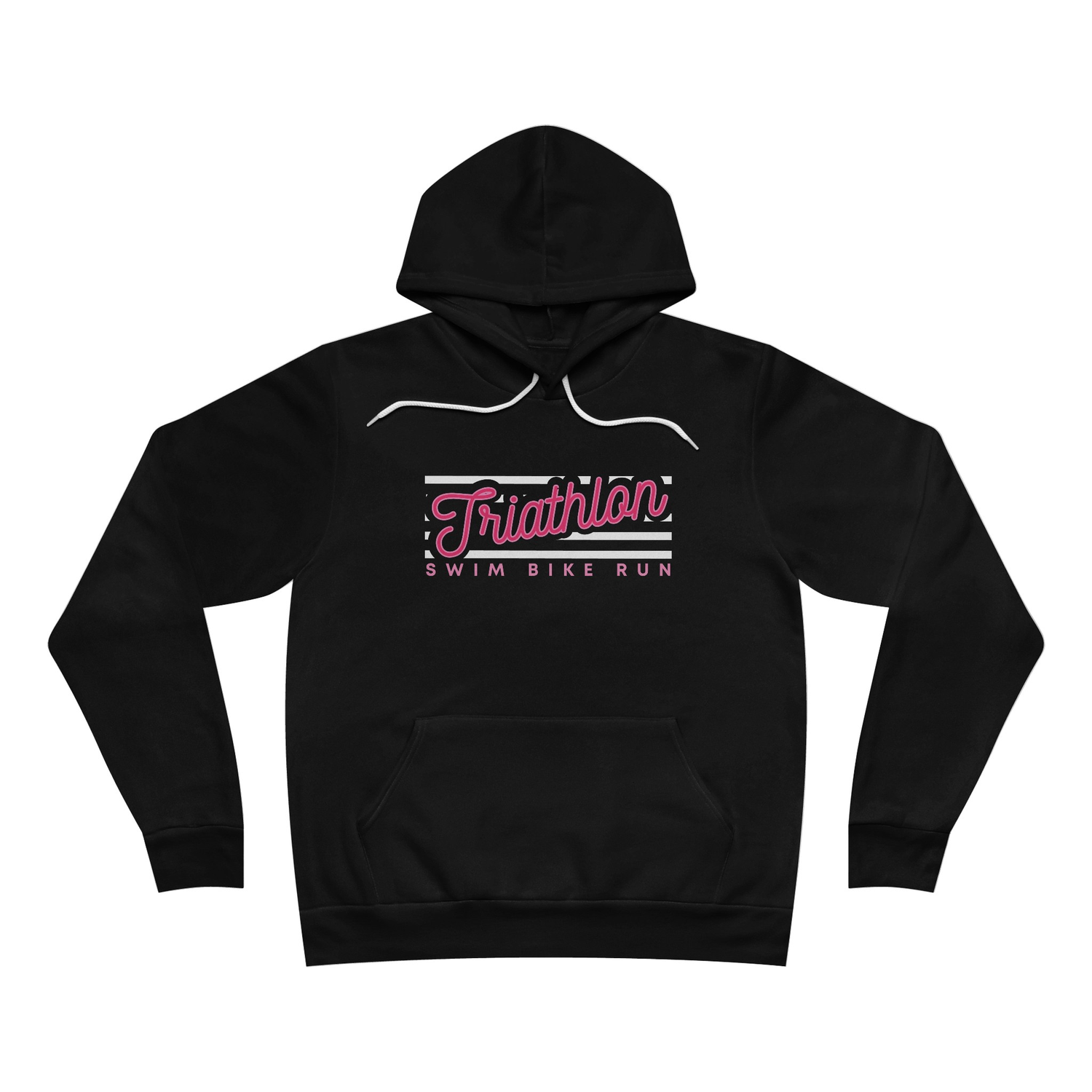Getting honest—race nutrition can feel overwhelming. There are gels, chews, bars, sports drinks, salt tabs. I end up spending far longer than needed investigating all the options, and then make a guess.
Race nutrition is about getting the right mix of carbs and electrolytes—AND—it’s about learning what makes you feel strong, steady, and confident on race day. Whether it’s your first sprint or your fifth 70.3, dialing in your fueling strategy can be the key to actually enjoying the race—not just surviving it.
And the truth is, there’s no perfect plan. What works for someone else might not work for you—and that’s okay. The goal is to listen to your body, practice during training, and give yourself grace along the way.
Why Race Nutrition Matters
During a triathlon, your body is working hard—burning carbs, sweating out electrolytes, and trying to keep your energy stable over hours of effort. Without the right fuel at the right time, you risk feeling sluggish, cramping, hitting “the wall,” and possibly not making it to the finish line. Getting your nutrition right can be a game changer! Here’s what I’ve learned—sometimes the hard (and also expensive) way—about finding the nutrition that works for you.
1. Know Your Distance (and Your Vibe)
Fueling needs change depending on how long you’re out there. More time on course = more fuel needed.
- Sprint (1–2+ hours): You might just need some water, a banana, and a gel.
- Olympic (3+ hours): Fueling becomes more important— aim for 100–200 calories/hour.
- Half Ironman and longer (4+ hours): You need a good plan for carbs, fluids, and electrolytes over time.
The longer the race, the more thoughtful your nutrition strategy should be—but don’t stress. You’ll learn by doing. The most important thing? Don’t try anything new on race day.
2. Try Different Fuel—and Go With What Feels Good
There’s no single “best” fuel—just what you tolerate and enjoy. Some people swear by waffles or chews, others get through on bananas and Gatorade. I’ve learned that I do best with a little mix of solid food and electrolyte drink on the bike, and gels and water on the run. A race full of gels leaves me feeling… gross.
Here are a few popular options to test out:
- Gels (thicker, quick sugar, some options include caffeine)
- Chews (like candy but made for athletes)
- Bars (watch for too much fiber to avoid tummy issues!)
- Sports drinks (some have calories, some just electrolytes)
- Real food (bars, half a PB&J, banana, pretzel rods, fig newtons, etc.)
- Electrolyte tablets or salt caps: Great for hot races and/or heavy sweater)
Try them during training. If something upsets your stomach on a long run, it’s not your friend on race day. And go for variety in flavor and texture to avoid flavor fatigue, especially in longer races.
3. Practice, Don’t Wing It
Your gut needs training too! What you eat during training is what you should eat on race day. Practice your nutrition during long workouts so you know:
- What your stomach tolerates
- How often to fuel
- When to hydrate
Start with small amounts and build up. Set a simple timer or check your watch every 30–45 minutes to take in a small amount of fuel. It’s easier than playing catch-up when you’re fading. Your goal is to feel strong—not bloated, bonked, or running for the porta-potty.
4. Your Body Knows Best
Some of us need more salt. Some of us hate the texture of gels. Some of us can’t handle food until mile 10. And all of that is okay. .
Women especially may notice that things shift with our cycle, stress levels, or hydration needs. One race might feel totally different from the last, even if you trained just as hard.
The key is to pay attention, not punish yourself. If something doesn’t sit right, try something new. There’s no shame in trial and error.
Ask yourself:
- Do I feel energized after fueling?
- Do I crash halfway through a long run?
- Do I get stomach issues with certain products?
Tweak your plan until it fits your body. You’re not behind—you’re getting smarter.
5. Keep It Simple On Race Day
For race day, review your plan, keep it accessible, and stick with it. Here what helps me prep for race day:
-
I make a timeline of the race including the morning (don't skip breakfast), so I know what I’m eating and when. Remember, due to bike racking and transition set-up, there's often more time on race day from waking to exercising than there is on a regular day, so you might need to add some calories BEFORE your race.
-
Set timing goals for consumption: Every 8-10 miles on the bike (you can coordinate with the auto-lap timer on your watch so you time it accordingly) and every 3 miles on the run.
-
I like real food and chews on the bike; and gels (some with caffeine) on the run. I usually don’t take caffeine gels until halfway through the run so I can ensure the caffeine kicks in when I really need it. Don't add caffeine if you haven't trained with it!
-
Fill all your water bottles the night before a race. Ensure you have an extra bottle to drink BEFORE the race.
Oh—and pack a post-race snack that you’ll be excited to eat and something cozy to change into. Nothing beats a warm hoodie, comfy joggers, and your favorite snack in hand after you cross that finish line.
Final Thought
You’re already out there doing the hard thing—swimming, biking, running. Race nutrition doesn’t need to be one more stressful variable. Take the time to test a few things, go with your gut (literally), and know that it’s okay to get it a little wrong before you get it right.
You’re not just fueling for a finish—you’re fueling for the experience. And that’s what makes it all worth it. Good luck to you!
